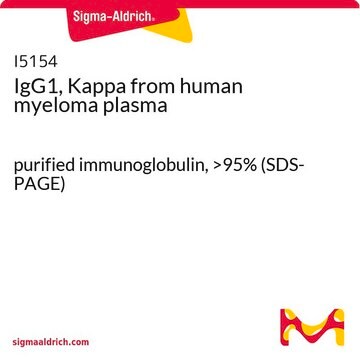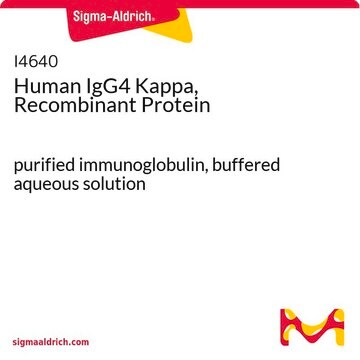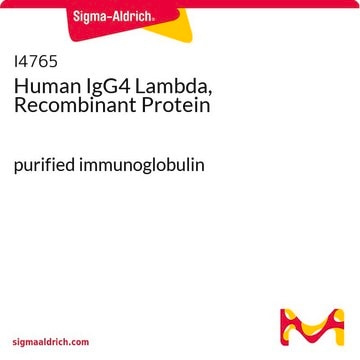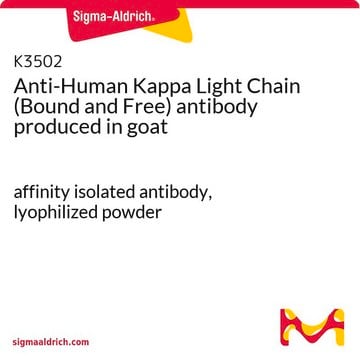I3784
IgG3, Kappa from murine myeloma
clone DX, purified immunoglobulin, buffered aqueous solution
Synonym(s):
Mouse IgG3-κ
About This Item
Recommended Products
biological source
mouse
Quality Level
conjugate
unconjugated
antibody form
purified immunoglobulin
clone
DX, monoclonal
Assay
≥95% (microfluidic capillary gel electrophoresis)
form
buffered aqueous solution
shipped in
dry ice
storage temp.
−20°C
Looking for similar products? Visit Product Comparison Guide
General description
IgG3, κ from murine myeloma specifically recognizes mouse IgG3. Specificity of the mouse IgG3, κ is determined by immunodiffusion and IEP techniques. The purified myeloma preparation is non-reactive with antisera to mouse IgA, IgM, IgD, IgG1, IgG2a and IgG2b.
Application
Physical form
Disclaimer
Signal Word
Warning
Hazard Statements
Precautionary Statements
Hazard Classifications
Eye Irrit. 2 - Skin Irrit. 2
Storage Class Code
10 - Combustible liquids
WGK
WGK 2
Flash Point(F)
Not applicable
Flash Point(C)
Not applicable
Certificates of Analysis (COA)
Search for Certificates of Analysis (COA) by entering the products Lot/Batch Number. Lot and Batch Numbers can be found on a product’s label following the words ‘Lot’ or ‘Batch’.
Already Own This Product?
Find documentation for the products that you have recently purchased in the Document Library.
Our team of scientists has experience in all areas of research including Life Science, Material Science, Chemical Synthesis, Chromatography, Analytical and many others.
Contact Technical Service








